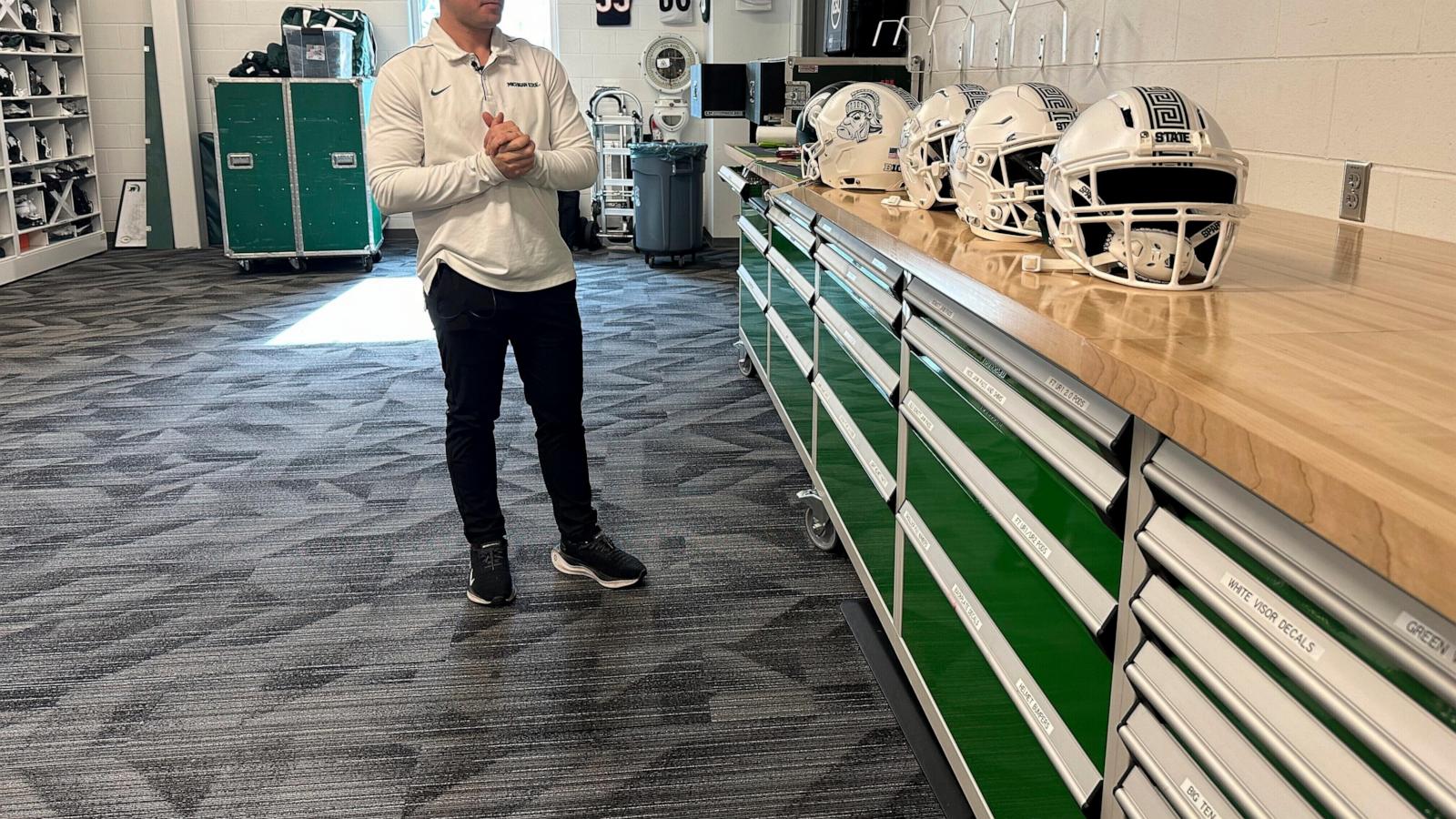Michigan State University Develops 3D-Printed Ear Inserts to Help Football Players Hear Play Calls Amidst Deafening Crowd Noise
In the heart-pounding world of college football, where the roar of the crowd can reach deafening levels, clear communication is critical for success. Imagine trying to hear your coach's instructions with 110,000 fans screaming at the top of their lungs – that's the challenge faced by quarterbacks and linebackers. But what if there was a solution? At Michigan State University, the answer came in the form of 3D-printed ear inserts, a revolutionary innovation that's silencing the noise and amplifying victory. This innovative solution isn't just changing the game at Michigan State; it's rapidly becoming the new standard in college and professional football!
The Problem: The Deafening Roar of the Crowd
For years, college football players have struggled to hear their coaches' instructions amidst the intense noise of a packed stadium. The problem is particularly acute for quarterbacks and linebackers who require critical play calls in real-time. While quarterbacks frequently used hand signals to receive instructions from coaches in previous seasons, the recent change in NCAA rules in the 2024 season will allow for the use of helmet communication. However, coaches and teams have realized that even with the most advanced headsets, the loud stadium noise overwhelms players, making clear communication challenging, sometimes even impossible. The resulting inability of the quarterback and linebacker to correctly receive instructions has been devastating in many football games resulting in poor gameplay and scores.
Traditional Solutions: Duct Tape and the Search for Something Better
Before the emergence of this groundbreaking technology, many teams experimented with rudimentary solutions to dampen stadium noise, the most common being duct tape inside the ear holes of helmets. These methods are messy, unreliable, often falling out, uncomfortable and hardly practical in a high-stakes environment. The urgent need for a more effective and comfortable solution for all involved clearly indicated a need for the current advancements in ear insert technology.
The Solution: 3D-Printed Earhole Inserts from Michigan State University
Recognizing this challenge, Michigan State University took action by uniting athletic and engineering expertise. Head football equipment manager Andrew Kolpacki partnered with mechanical engineering professor Tamara Reid Bush, bringing together two worlds with common goals. The goal was simple: to improve communication and gameplay.
The Science Behind the Inserts
The team used a 3D printer and a bio-based plastic called polylactic acid (PLA) to create customized earhole inserts. The PLA material is highly biocompatible and offers good acoustic damping properties and customization capabilities. They used the most advanced and highly sophisticated 3D printing technology and research lab facilities which enabled them to effectively solve these problems, thus improving player performance and ability to receive calls. They even adjusted the designs repeatedly for several iterations before perfecting them for game use. The collaboration highlights how interdisciplinary cooperation can lead to breakthroughs in sports technology. What a phenomenal, game-changing solution for the team.
From Lab to Field: An Ingenious Success Story
The inserts proved to be highly effective. Players, especially starting quarterback Aidan Chiles and linebacker Jordan Turner, noticed an immediate improvement in their ability to hear play calls, despite the noisy environment of away games in impressive college venues such as Michigan stadium and Oregon’s Autzen Stadium. Michigan State’s improvement and better play are a clear sign of the game-changing nature of the ear inserts.
The Expanding Impact: Beyond Michigan State
This technological triumph spread quickly, capturing the attention of numerous other teams. Many universities started producing similar earhole covers. Some of these were purchased from XO Armor Technologies, which supplies a variety of 3D-printed athletic gear.
XO Armor Technologies' Contribution
XO Armor Technologies, a leading developer and supplier of 3D-printed athletic gear, was approached by the Houston Texans, demonstrating the broader applicability of 3D-printed technology for various athletic use cases. Other colleges that soon followed included Georgia, Clemson, Boise State and Arizona State.
Game-Changing Technology Across Multiple Sports Leagues
XO Armor reports supplying its customized versions to around 60 teams in college and professional football – a testament to this solution’s potential in professional and collegiate leagues. The impact stretches beyond individual universities, signaling a widespread adoption of this innovation. This type of advanced innovation in design and engineering clearly speaks volumes and indicates widespread benefits which should positively impact games throughout both leagues.
The Future of Communication in Football
The impact of this invention is huge and unprecedented, demonstrating potential to completely revolutionize communication and gameplay during high-stake games. As technology continues to evolve, more innovative solutions like this will inevitably emerge. As many leagues follow suit, even the smallest improvements to hearing and receiving game instructions clearly improve gameplay performance.
The Ongoing Evolution of 3D-Printed Technology in Sports
These ear inserts represent just the beginning. The technology’s widespread acceptance signifies an evolution in sport tech, showcasing how universities and technology companies can collaborate to enhance athletic performance.
Take Away Points:
- 3D-printed ear inserts dramatically improve communication between coaches and players in noisy stadiums.
- Michigan State's innovation serves as a model for integrating technology to improve athletic performance.
- The technology has seen widespread adoption across many college and professional football teams.
- This is expected to drastically change how games are played in the future.




